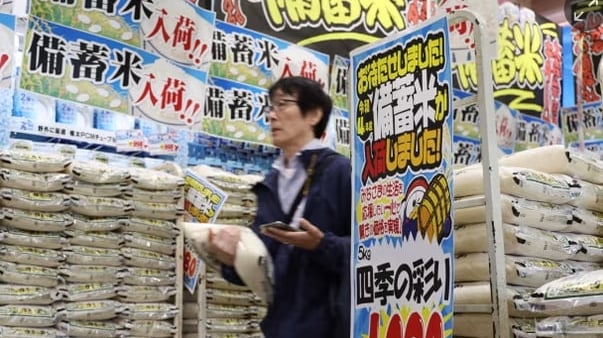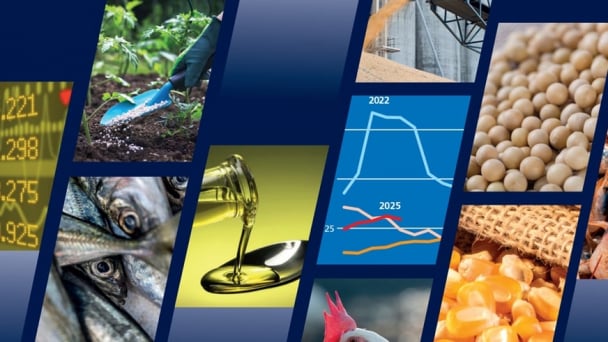June 19, 2025 | 17:09 GMT +7
June 19, 2025 | 17:09 GMT +7
Hotline: 0913.378.918
June 19, 2025 | 17:09 GMT +7
Hotline: 0913.378.918
These projections further illustrate the effects of India’s trade-distorting policies on global rice markets.
The USDA WASDE projected India’s 2025/26 rice production at a record 151 million metric tons (MMT), up 3 MMT from last month’s estimate due to a higher planted area and increased monsoon prospects. At the same time, the 2025/26 U.S. import forecast was raised by 1.5 million hundredweight (cwt) to a record 50.7 million cwt or roughly 2.6 MMT.
The USDA Foreign Agricultural Service published U.S. Census Bureau monthly data on June 5 for April 2025 imports, which showed the largest January-April monthly volume on record for foreign rice flowing into the domestic market at nearly $580 million. Since 2014, U.S. imports of Indian rice have grown by nearly 123 percent to a record $395 million in 2024 and are on track to grow even higher with the first four months of 2025 up 23 percent.
India, who has surpassed China as the world’s largest rice producer, has repeatedly provided lucrative subsidies for rice production—through minimum support prices, input subsidies, and public stockholding programs—that exceed its World Trade Organization (WTO) domestic support limits, distorting global markets, and undermining rice producers not only in the United States, but around the world. Since 2018, the Office of the U.S. Trade Representative, and a handful of foreign governments, have counter-notified India of its domestic support levels at the WTO, capturing a decade’s worth of consistent illegal subsidies well above the agreed upon levels.
Earlier this year, the U.S. International Trade Commission published a report on global rice competitiveness, which again illustrates India’s continual use and increase of trade-distorting measures (see USA Rice Daily, April 15, 2025; USA Rice Daily, November 12, 2024; USA Rice Daily, March 10, 2025). The report includes a simulated scenario that showed via economic modeling, that if all countries unanimously removed their tariffs on rice, U.S. rice exports would increase by 41.4 percent.
In reference to India, the report says, “The government-provided input subsidies, which lower farm costs and boost production, may ultimately favor input-intensive crops, such as wheat and rice, over the production of others. For example, fertilizer subsidies lower the cost to produce fertilizer-intensive crops, which has shifted production in some states to rice and wheat.” Indicating a significant expansion of rice acreage since the first report into traditionally non-rice Indian states.
“India’s dominant role in the global rice market continues to be fueled by unsustainable domestic subsidies that far exceed its WTO commitments,” said USA Rice President & CEO Peter Bachmann. “The latest WASDE projection makes clear that India’s policies, acts, and practices continue to support increased rice planting and production, and reinforces the need for the U.S. government to hold India and other bad actors that are moving rice into the United States at these alarming rates accountable.”
Louisiana rice miller and chair of the USA Rice International Trade Policy Committee Bobby Hanks commented, “For years, we have called on the U.S. government to hold India accountable to its commitments at the WTO, but to no avail. While government inaction has allowed India to continue distorting global rice prices and U.S. export markets, it also paved a way for rice imports from India to grow and displace U.S. grown rice right here at home. The April 9 pause of India’s country-specific tariff actually caused higher imports to flow into the United States and continue hurting our domestic market.”
Hanks continued, “The Trump Administration’s trade priority to pursue reciprocity clearly aligns with our call to action. We know India will not change its policies and practices on its own. The Administration would be wise to leverage the use of all domestic trade tools at our disposal, and the ongoing trade negotiations, to finally hold India and others accountable and protect American rice farmers and manufacturers.”
USA Rice continues to engage with the Administration and Congressional leaders to emphasize the need for enforcement actions that level the playing field for U.S. farmers, millers, and exporters.
stuttgartdailyleader
/2025/06/17/2344-1-131758_261.jpg)
(VAN) Amid tariff risks and growing trade barriers in the U.S. market, Australia is emerging as a promising destination to sustain the growth momentum of Vietnam's shrimp exports.
/2025/06/17/2013-1-nongnghiep-112009.jpg)
(VAN) This notable growth trend reflects the global taste for fresh, nutritious fruits and the expanding use of lychees across various sectors.

(VAN) The political and cultural insulation of Japan’s beloved grain is falling apart, and experts warn the country’s relationship with the staple will have to adapt.

(VAN) Noting risks, report examines impacts of avian influenza, changing trade patterns since 2022, fish fraud, and shipping industry’s net-zero goals.

(VAN) Mr. Tran Quang Bao, General Director of the Forestry and Forest Protection Department, met and worked with the International Wood Products Association to promote cooperation in the field of timber trade.

(VAN) China's outbound shipments of rare earths in May jumped 23% on the month to their highest in a year, though Beijing's export curbs on some of the critical minerals halted some overseas sales.